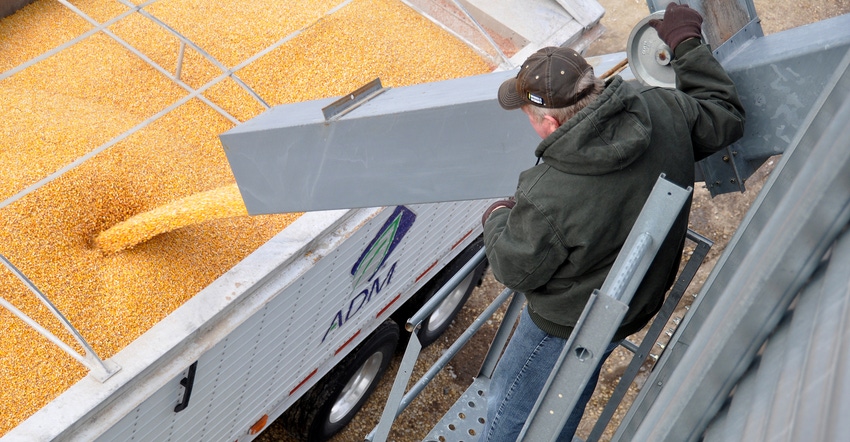
Growing soil organic carbon with cover crops and conservation tillage pays in more ways than just improved soil health, says Broadlands, Ill., farmer Joe Rothermel. He’s using both practices on his farm and earning an annual paycheck for his efforts.
Rothermel is one of 12 Illinois landowners earning income from storing carbon in a 2021 pilot program from the Ecosystem Services Market Consortium. He hopes to make $10 to 15 an acre following the 2021 growing season, but prices could fluctuate above or below that. ESMC doesn’t set a price, relying on price discovery on the open market instead.
Related: Get paid for sequestering carbon
The consortium includes organizations such as Archer Daniels Midland, National Farmers Union and others. It formed in 2019 to pool resources into building a market for sustainable farming credits. ADM, Growmark and IL Corn’s Precision Conservation Management program are working with the consortium in Illinois in what is now the ninth ESMC pilot program in the U.S.
In PCM’s 16-county area in central and eastern Illinois, ESMC is establishing a market that pays farmers back for their soil health investments in the 2021 growing season, packaging the tons of carbon kept in soil into verified credits that ADM then buys. The partnership is still looking for buyers of water quality credits for the 2021 pilot year.
“I plant oats and radishes in 30-inch rows so that they winter-kill,” Rothermel says. “Between the rows, I usually plant winter barley. I’m mostly no-till, but I do strip tillage on my mucky ground.” He stacks carbon storage and water quality credits on top of each other for using cover crops in the 2,600-acre pilot program. “Cover crops do a lot of good things.”
Related: Subsidize your step into cover crops
While Rothermel is unsure exactly how much he’ll earn from his annual paycheck written out by ESMC in 2021, other carbon credit programs have set the price at around $20 per ton of carbon.
University of Illinois research shows that in central Illinois soils, it’s possible to accumulate about a half ton of carbon per acre using reduced tillage and an overwintering cover crop such as cereal rye or winter barley. Rothermel says after using cover crops for 10 years, “I’m excited to see where I am and where I’ll go.”
The computer model that estimates Rothermel’s carbon storage is based on similar research. It may overpay him, and soil tests on years 5 and 10 of the contract will show that. But if that happens, he wouldn’t have to return the extra money ESMC paid out.
What’s next?
ESMC plans a full launch of the carbon and water market in 2022, as the pool of ADM’s corporate clients who need to buy credits to meet sustainability goals grows. Farmers in the PCM region of Illinois interested in joining the program in 2022 can contact Laura Gentry at 217-239-1016 or [email protected]. She says the region will grow by 2022 to include at least five southeastern Illinois counties.
ESMC expects demand for carbon credits will impact at least 10,000 Illinois acres after full launch. Rather than receive a flat cost-share payment every year like the Conservation Reserve Program, ESMC credits trade like a commodity, with supply and demand affecting price, explains Luke Rund, PCM conservation specialist in Piatt, Champaign, Douglas and DeWitt counties.
“I think of it as another source of cost share. Especially with the uncertain grain markets this year, this program adds another source of revenue to make it easier to invest in conservation," Rund says.
Rund explains that farmers who do a lot of tillage or use other practices that reduce soil carbon and degrade water quality won’t build up enough environmental benefits to earn credits.
“Any practice that helps build soil carbon can qualify a farmer for receiving ESMC credits — for example, manure application and cover crops,” Rund says.
By the time ESMC has its full market launch in 2022, it plans to reduce expenses related to soil testing by experimenting with autonomous technology. The farmer has to pay for tests in years 1, 5 and 10 of a contract.
Debbie Reed, ESMC executive director, says lower costs will allow the program to avoid the fate of past carbon credit programs that saw 70% of the money earned from selling credits go to testing instead of the landowner. While the landowner will accrue revenue from the credits in the pilot, in the future, Rund says they’re looking to develop some type of agreement for renters and owners to divvy out payments.
Read more about:
No tillAbout the Author(s)
You May Also Like




